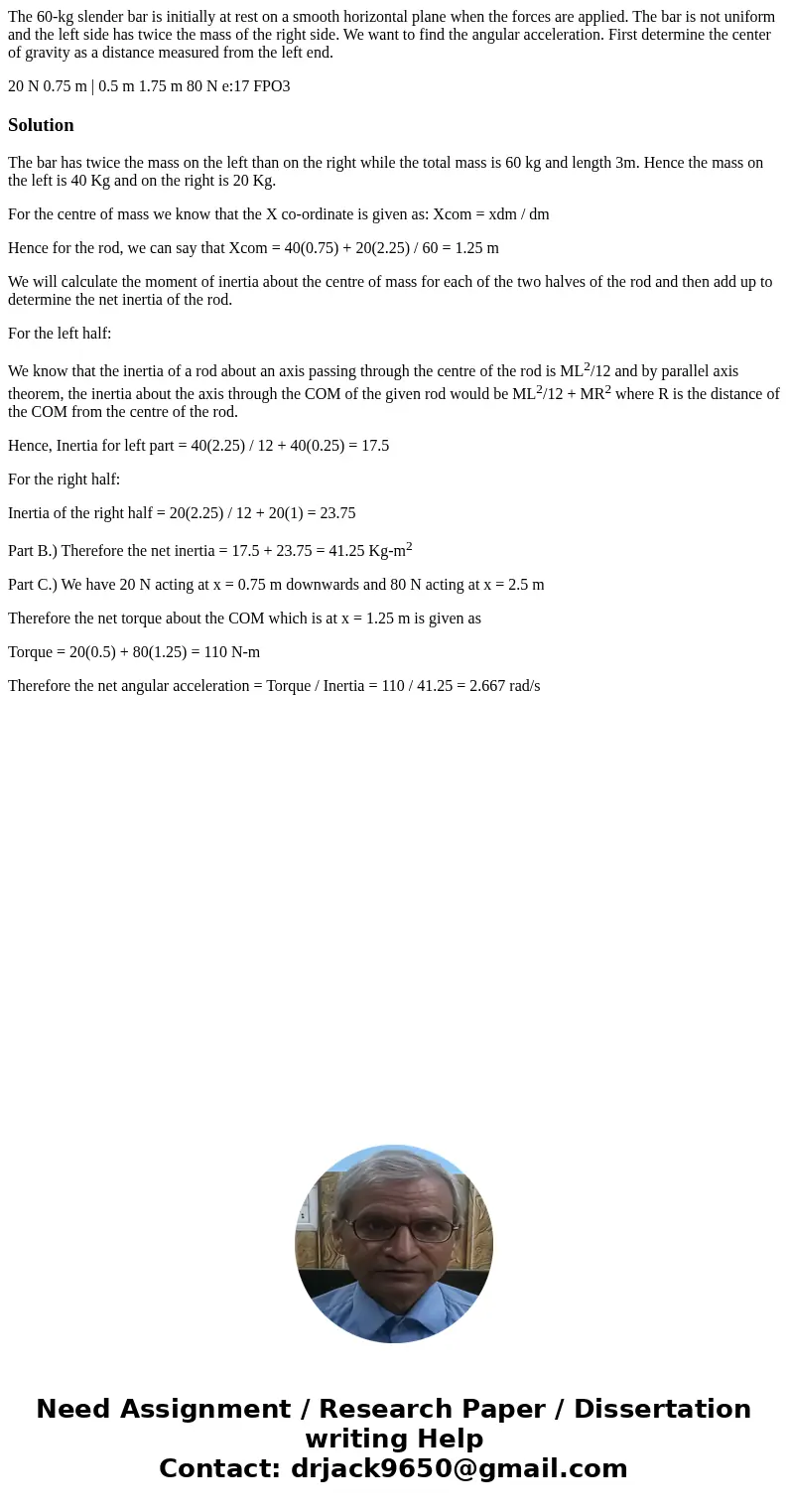The 60kg slender bar is initially at rest on a smooth horizo
The 60-kg slender bar is initially at rest on a smooth horizontal plane when the forces are applied. The bar is not uniform and the left side has twice the mass of the right side. We want to find the angular acceleration. First determine the center of gravity as a distance measured from the left end.
20 N 0.75 m | 0.5 m 1.75 m 80 N e:17 FPO3Solution
The bar has twice the mass on the left than on the right while the total mass is 60 kg and length 3m. Hence the mass on the left is 40 Kg and on the right is 20 Kg.
For the centre of mass we know that the X co-ordinate is given as: Xcom = xdm / dm
Hence for the rod, we can say that Xcom = 40(0.75) + 20(2.25) / 60 = 1.25 m
We will calculate the moment of inertia about the centre of mass for each of the two halves of the rod and then add up to determine the net inertia of the rod.
For the left half:
We know that the inertia of a rod about an axis passing through the centre of the rod is ML2/12 and by parallel axis theorem, the inertia about the axis through the COM of the given rod would be ML2/12 + MR2 where R is the distance of the COM from the centre of the rod.
Hence, Inertia for left part = 40(2.25) / 12 + 40(0.25) = 17.5
For the right half:
Inertia of the right half = 20(2.25) / 12 + 20(1) = 23.75
Part B.) Therefore the net inertia = 17.5 + 23.75 = 41.25 Kg-m2
Part C.) We have 20 N acting at x = 0.75 m downwards and 80 N acting at x = 2.5 m
Therefore the net torque about the COM which is at x = 1.25 m is given as
Torque = 20(0.5) + 80(1.25) = 110 N-m
Therefore the net angular acceleration = Torque / Inertia = 110 / 41.25 = 2.667 rad/s

 Homework Sourse
Homework Sourse